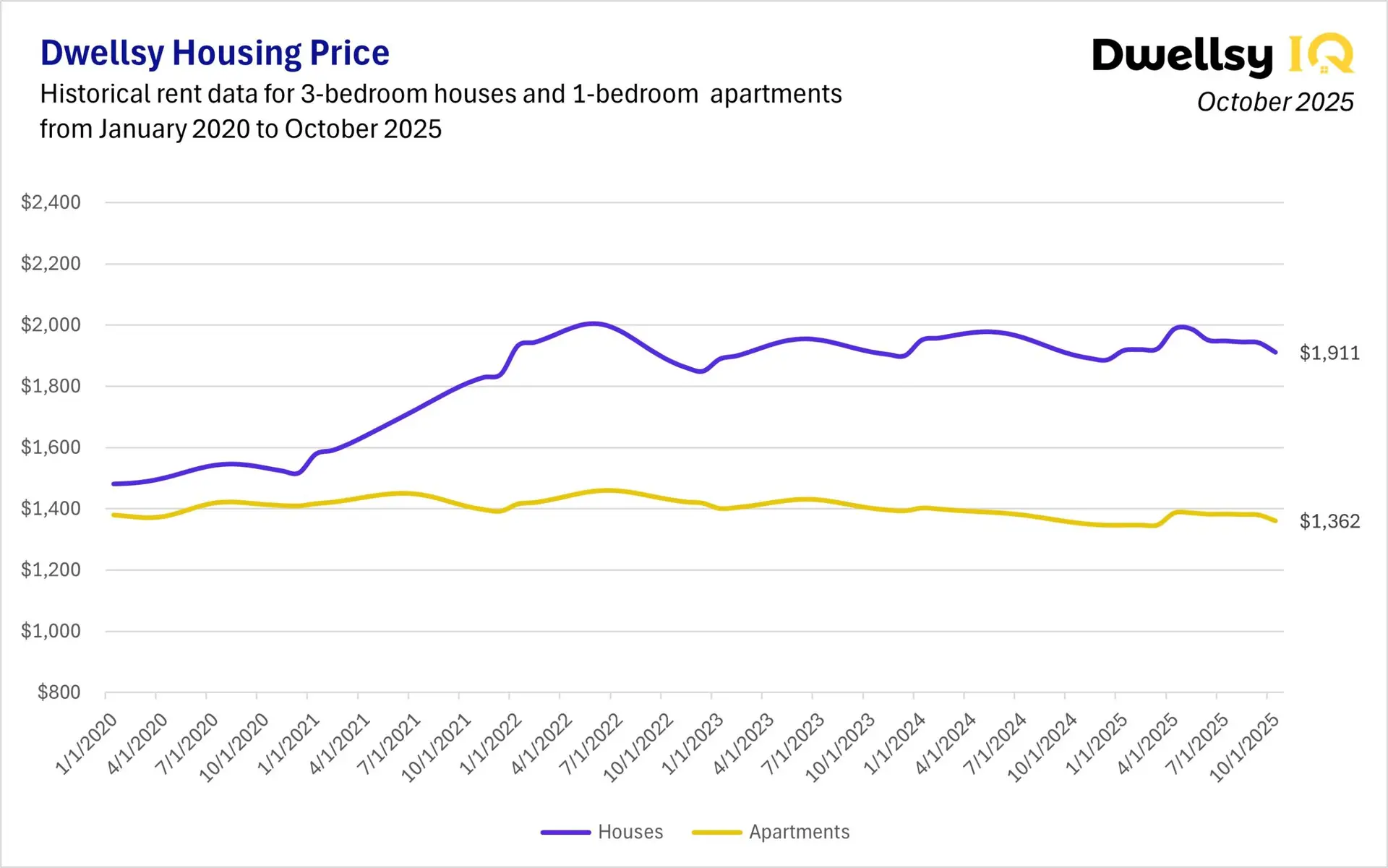The U.S. real estate market is expected to be worth more than $136 trillion, according to Statista. Yet none of that growth happens without one essential factor driving it all: real estate data.
Every lease signed, every policy drafted, every investment made? It all starts with real estate data. We’re talking property details, transaction histories, rental rates, risk signals, and the entire ecosystem that gives decision-makers confidence to act. After all, the quality and scope of your data impacts directly everything from investment ROI to user experience.
In this guide, you’ll find the core data types, the benefits of using real estate data, and the strategies organizations use to put all this information to work.
What is the scope of real estate data?
Real estate data isn’t one-size-fits-all (as most things in our lives, right?) It spans across property types, industries, and use cases, and each slice of it demands its own lens of analysis.
What types of property categories exist in the real estate market?
- Residential: single-family rentals (SFR), condos, townhomes, manufactured homes.
- Commercial: offices, retail, industrial, hospitality.
- Multifamily: apartments, duplexes, mixed-use developments.
- Raw land: undeveloped parcels, farmland, future development sites.
What are the use cases for real estate data?
- Proptech companies tap into real estate data to enrich their insights. By pulling from multiple data sources, they can identify patterns, sharpen analytics, and build smarter tools for property managers, landlords, and renters.
- Investors scan property data to uncover high-ROI opportunities and spot market shifts before anyone else.
- Government agencies lean on housing data to confront affordability challenges and guide infrastructure planning.
- Fintech companies plug property insights into mortgage platforms, valuation models, and investment apps.
- GIS providers enrich maps and location intelligence with property layers.
- Universities mine housing datasets to fuel research and urban planning.
- Others.
Which types of data are used in real estate?
Not all real estate data is created equal. Each category plays a different role depending on who’s using it and why.
Property Listings Data
At the heart of real estate data analytics are active listings, sold and rented properties, and transaction records. In other words, the essential datasets behind market transparency and pricing accuracy. The data points include listing prices, property details, and days on market, forming the basis for comparative market analyses (CMAs) and automated valuation models (AVMs).
For investors and data platforms, this dataset is where every valuation model and investment insight begins.
Rental Data
With renting on the rise, rental market data has become indispensable. This covers SFRs, multifamily housing, and apartment complexes, tracking current rent rates and property characteristics, such as number of bedroom, bathroom, whether the property has garage and more.
This type of data is especially valuable for platforms looking to enrich their insights, government agencies tackling housing challenges, and universities and hedge funds conducting research on affordability, demand, or long-term market shifts.
Pssstt…
Dwellsy aggregates data from multiple property management and listing platforms, making it the most comprehensive and accurate rental data source in the U.S. With over 16 million verified listings, Dwellsy’s dataset offers a broader, more accurate view of market activity than any other rental platform.
Valuation Data
This is where property worth gets calculated. AVMs, appraisal comps, and market-based pricing estimates. Lenders, investors, and insurers use it to set financing terms, weigh risks, and validate investment decisions.
Mortgage & Finance Data
This side of the house looks at the money flow. Loan performance, mortgage rates, foreclosure activity, and lending patterns shape how lenders manage risk, how investors find distressed assets, and how policymakers understand housing finance.
Insurance & Risk Data
As climate risks intensify, hazard and insurance data have become critical for decision-making. Hazard data (such as flood maps, wildfire zones, hurricane exposure, fault lines, and climate projections) provides visibility into potential threats, while insurance data, including rates, coverage gaps, and mitigation measures, highlights how those risks translate into financial exposure.
Demographic & Affordability Data
Markets are as much about buildings as they’re about people. Demographic and affordability data shines a light on population growth, age breakdowns, employment trends, and household formation. Housing affordability indices, which compare home prices to household incomes, reveal whether markets are opening doors or shutting people out.
What are the benefits of real estate data?
Organizations leveraging comprehensive real estate data gain significant competitive advantages across multiple operational areas.
Accuracy at Scale
Reliable datasets reduce errors in forecasting, underwriting, and analysis. This accuracy builds confidence in decisions, whether they’re about investment, housing policy, or product development.
Time Savings
Automated access to structured data replaces manual research and scattered sources. Teams spend less time collecting information and more time using it to make strategic moves.
Cost Reduction
Better data reduces the hidden costs of mistakes, like overpriced acquisitions, mispriced rents, or policies built on weak assumptions. Every avoided error protects ROI.
Credibility and Trust
When insights come from verified sources, organizations build credibility with stakeholders, because investors trust the models, policymakers trust the reports, and end-users trust the platforms.
Flexibility and Customization
Granular, well-structured data can be filtered by geography, property type, or timeframe, giving different industries exactly what they need. This adaptability is a direct benefit over rigid, one-size-fits-all datasets.
Competitive Advantage
High-quality data creates differentiation. Platforms can offer sharper insights, agencies can publish stronger research, and financial institutions can price more effectively. In competitive markets, that edge is hard to replicate.
What are the limitations of real estate data?
Real estate data is powerful, but it’s not perfect. Knowing where the limitations are helps set realistic expectations and ensures you’re using the right data for the right job.
Geographic Coverage Gap
Some providers focus heavily on large metro areas, which means smaller cities and rural markets can be left out. If national coverage matters to you, it’s worth checking how far a dataset really covers.
Format Inconsistencies
MLS systems don’t all speak the same language. Each region may have its own way of structuring data, and pulling them together can feel like stitching a quilt. Normalizing formats is often a necessary step before any real analysis begins.
Compliance Complexities
Real estate data access involves many regulatory requirements. Licensing agreements, usage rights, and regulatory requirements all come into play. Missing those details can cause more trouble than the data’s worth.
Timing Considerations
Some datasets give you an early snapshot that later gets revised, others provide final figures that are already a bit dated. Understanding how “fresh” you need the data to be is key to making it useful.
Data Quality Variations
Not every dataset is built the same way. Scraped or survey-based data can carry errors, duplicates, or missing fields that skew analysis. Verified, well-sourced data is harder to come by, but it makes all the difference when accuracy matters.
How to build your real estate data implementation strategy?
1. Define use cases and success metrics
Go beyond “investment” or “policy” as broad categories. Specify which models or outputs the data will feed (e.g., cap rate forecasting, climate-adjusted risk models, or affordability indices). Define success in measurable terms, like a 5% improvement in forecast accuracy or a reduction in vacancy forecasting error, such as MASE or RMSE.
2. Evaluate providers against specific needs
Reputation alone doesn’t guarantee fit. For advanced use cases (and to avoid regrets later), dig into methodology:
- How is the data collected, and what are the downsides of each method?
- What’s the refresh cadence?
- Does the provider support API integration with rate limits that align with your workflows?
- What level of granularity can be customized in the data you receive?
And always request sample datasets and run your own accuracy tests against internal benchmarks before committing to an SLA.
3. Plan for integration and normalization
When pulling data from MLS, PMS, and third-party sources, expect mismatches. Each system labels and structures fields differently (one may call it sqft, another size, and another may leave it blank). To manage this, start by defining a standard schema upfront. For example, property IDs, location (geocoding), and unit attributes like bedrooms, bathrooms, and square footage.
Once you know your schema, set up automated processes to transform incoming data into that structure. ETL pipelines or orchestration tools such as Airflow, Fivetran, or dbt can extract raw data, reformat it to match your schema, and load it into your database. These pipelines also handle cleaning and deduplication.
Finally, build quality checks into the pipeline. For instance, set alerts to flag rents that fall outside expected ranges or records missing key fields like square footage. This way, errors are caught early, and the dataset stays reliable for analysis.
4. Address compliance requirements upfront
Licensing and regulatory rules can be as tricky as the data itself. Clarify allowed use cases (internal analysis vs. resale), storage requirements (on-premises vs. cloud), and retention limits. For government or academic applications, confirm whether IRB or disclosure rules apply. Factor these into your implementation timeline, because compliance work often takes longer than the technical setup itself.
Conclusion
The U.S. real estate market may be worth trillions, but without reliable data, that value is hard to act on. What drives decisions, policies, and products isn’t the size of the market itself, but the quality of the information underneath.
And that’s where the real divide shows up, because not all datasets are created equal. Accuracy, coverage, and flexibility determine whether data becomes an advantage or a liability. Organizations that focus on these principles are the ones able to forecast with confidence, innovate effectively, and build trust.
Frequently Asked Questions
What is real estate data?
Real estate data is information about properties, markets, and transactions. It includes property listings, rental rates, valuations, mortgage activity, demographics, and risk factors that help organizations make informed decisions.
Why is real estate data important in 2025?
In 2025, real estate data is more critical than ever because markets are more complex, competitive, and climate-sensitive. Reliable data improves forecasting, risk modeling, investment strategies, and product development.
What are the main types of real estate data?
The key types include property listings data, rental data, valuation data, mortgage and finance data, insurance and risk data, and demographic and affordability data. Each type supports different industries and use cases.
Who uses real estate data?
Investors, government agencies, insurers, fintech companies, GIS providers, universities, and PropTech platforms all depend on real estate data for analysis, strategy, and innovation.
How accurate is rental data compared to MLS data?
MLS systems capture only about 3% of U.S. rental listings. Verified rental data sourced directly from property management systems offers broader coverage and higher accuracy — often more than 30% of the total market.
What are the limitations of real estate data?
Common limitations include geographic coverage gaps, inconsistent formats across MLS and PMS systems, compliance restrictions, outdated updates, and inaccuracies from scraped or survey-based sources.
What role does real estate data play in SaaS and PropTech?
SaaS and PropTech platforms rely on accurate data behind the scenes. If the data is reliable, user experience and adoption improve. If not, the product suffers from trust and adoption issues.



